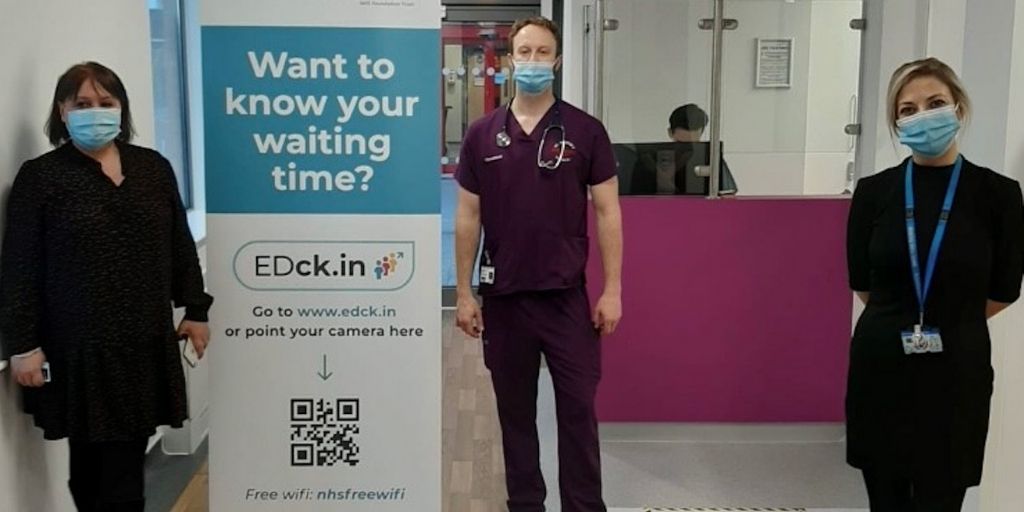
Patients in St George’s Hospital Emergency Department (ED) know exactly where they are in the queue thanks to real time updates on TV screens and to patients’ own smartphones.
In a move that reassures patients that they have not been missed or bypassed, the new system called “Patientcheck.in” helps free up emergency reception staff who handle a high volume of questions from patients about their wait and queue position. This has a knock-on delay in booking in new patients. Patientcheck.in – previously called “EDck.in” – also allows patients to complete a brief assessment questionnaire while they wait, using their own smartphone, which saves time during the assessment.
The technology aims to reduce patient anxiety around waiting times and improve efficiency.
Funded by the NHS’s Health Innovation Network, a joint Emergency Department and Transformation project team at St George’s was awarded £9,928 to design and build the software system and install TV monitors in the waiting areas. St George’s is one of the first Emergency Departments in the UK to introduce a dual queuing and self-clerking system.
Previously, a whiteboard behind the reception desk was used to display general waiting times and updated every hour. Lack of visibility of individual positions in the queue can cause concern for patients, who can worry that they have been forgotten, passed over or missed their call to see the emergency team. This can lead to repeated queries to reception staff about the waiting time and occasionally result in aggressive and abusive behaviours which puts additional pressure on staff.
The second function – the assessment questionnaire – has three major benefits. It empowers patients to tell clinicians why they are in the ED, in their own words using a non-verbal communication channel; reduces clinical administration workload and creates better quality, standardised medical documentation.
Through its integration with Cerner, the hospitals’ electronic health record system, Patientcheck.in sends the questionnaire responses directly into the electronic clinical notes. This reduces note-typing time by around eight minutes per patient. Therefore, if just half of St George’s 400 ED daily attenders complete Patientcheck.in, this equates to a potential saving of more than 26 hours of clinical time every day.
The Health Innovation Network grant was used to develop and implement the system. Now live, the team hope that EDcheck.in will be adopted by other NHS Emergency Departments. There is also an opportunity to use it in outpatient departments and development projects are underway.
Dr Gabriel Jones, Emergency Medicine Consultant at St George’s University Hospitals NHS Foundation Trust, said:
“We are passionate about trying new ways to improve patient experience and safety and we believe better queue visibility will give patients reassurance and free up reception team time.
“Emergency departments are pressured and all you want is to do the best for patients. It’s difficult at the moment when we can’t easily answer their top question: when will I be seen? With relatively simple technology we believe we can make a huge difference to their experience and support staff at the same time by reducing interruptions. Greater transparency over the complex queues we operate will help everyone gain a greater understanding of how teams are working to help people.”
Health Innovation Network Programme Director for Innovation Lesley Soden said:
“Hospital emergency departments can often be highly volatile as by their nature they have anxious patients waiting to be seen. Those patients often worry that they have been missed or passed over by other patients and this can lead to repeated questions to hard pressed reception staff, who are then preventing from getting on with their work to triage.
“This is a simple system using existing technology that can improve the patient experience, free up reception staff to focus on registering arriving patients and ultimately lead to faster care in hospital emergency departments.”












